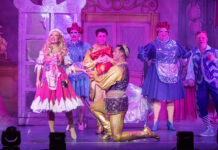Animal rights campaigners have spoken out against the British Horseracing Authority following the death of Grand National horse Celebre d’Allen.
Dene Stanall, horse racing consultant for Animal Aid, told MerseyNewsLive: “The British Horseracing Authority, who regulate horse welfare in British racing, need to be removed from their roles as they’re clearly not fit for purpose.
“Not just at the Grand National. Throughout 2024, 221 horses died on British race courses, and the BHA need to be made accountable.”
Mr Stanell also said: “A 13-year-old horse should never be allowed to run in the Grand National ever again; it’s simply too demanding for such an old horse to be taking part in.”
Jockey Michael Nolan pulled up Celebre d’Allen just after the final fence of the 30-fence race at Aintree on Saturday seconds before the horse collapsed of exhaustion.
Veterinarians looked after the horse. However, his trainers, Phillip Hobbs and Johnson White, announced on Tuesday that he had sadly passed away after “deteriorating significantly” overnight.
In a statement, Mr Hobbs and Mr White said: “We’re heartbroken to share that Celebre d’Allen has passed away.
“He received the very best treatment by the veterinary teams but could not be saved. He was a wonderful horse and we will all miss him greatly.”
In a stewards’ enquiry, Jockey Mr Nolan was found to have continued to ride Celebre d’Allen, who was the oldest horse in this year’s field, beyond the penultimate fence, even though the horse “appeared to have no more to give and was clearly losing ground”.
Mr Nolan has been given a 10-day suspension by the race day stewards; a sentence that Ian Green, director of Animal Aid described as “pitiful”.
A spokesperson for the BHA said: “British racing is one of the world’s best regulated animal activities. The BHA is the sport’s regulator, recognised by Government. The BHA sets and enforces the standards to which everyone involved in the sport must adhere.
“British racing is relentless in its efforts to reduce avoidable risk. However, as with any sport or activity involving horses it is impossible to remove risk entirely. As a result of the sport’s efforts to reduce risk the fatal injury rate in racing is 0.25% of runners. Racing provides a life, career and purpose for 20,000 horses every year.
“British racing is open and honest about the risks involved, and more information about welfare in racing can be found at www.horsepwr.co.uk.”
Brant Dunshea, acting chief executive of the BHA, said in an earlier statement: “As with all runners in the Grand National, Celebre d’Allen was provided with a thorough check by vets at the racecourse.
“This health check includes a trot up, physical examination of limbs to check for any heat, pain or swelling, and listening to the heart to check for any murmur or rhythm disturbance.”
Mr Dunshea has vowed that Aintree and the BHA will analyse Celebre d’Allen’s collapse in detail to “understand how all reasonable avoidable risk can be reduced in order to keep our horses and riders as safe as possible.”
Celebre d’Allen wasn’t the only casualty of this year’s Grand National. Broadway Boy, and his jockey both suffered severe injuries after falling at the 25th fence.
The Jockey Club reported that he was able to walk into the horse ambulance to be taken for further assessments.
His trainer, Nigel Twiston Davies, shared on X yesterday afternoon that Broadway Boy was “obviously still sore but the vets are happy with his progress.”
He added: “He’s getting all the attention possible, and he’s looking brighter each day.”
Jockey Tom Bellamy, who rode Broadway Boy, was sent to hospital, and later confirmed via X that he had suffered a broken wrist during the fall.











